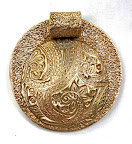I sure like working with many of the “base metal” clays (various versions of copper, bronze, and steel). I like the results I can achieve. But I also struggle with how to price these: How do I find that balance point where customers think my prices are fair while I feel adequately compensated?
Now, I do understand the various “formulas” that makers might use to calculate the price for their work. I’m fine with numbers, whether straight from such a formula or even after “tweaking” them a bit. I can figure the cost of the materials, a price for my time and/or an amount for general overhead (rent, insurance, equipment, consumables, etc.), plus a factor for the retail side (to cover commission to a gallery, entry costs for shows, etc.). I will price a number of pieces, sort them by price, compare that to recent history of items that have sold or remain unsold, and look to see if anything seems out of line. I may adjust individual items up or down a small amount: I’ll then bring in a bit more or less on some individual pieces but, overall, I want prices to look both consistent and reasonable.
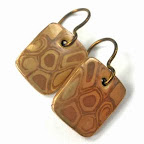 I have been getting some very positive responses to the look of pieces I’ve made this year in copper, yellow- and rose-bronze, and steel. But a few people have indicated that they would expect those to be very inexpensive, because of the material. I try to explain that the price includes factors for both material and time, and that the time for design and basic construction does not go down for a unique “art jewelry” piece just because the metal itself costs less. At that point, I’ll try to steer the discussion away from price and more into the artistry involved in various pieces.
I have been getting some very positive responses to the look of pieces I’ve made this year in copper, yellow- and rose-bronze, and steel. But a few people have indicated that they would expect those to be very inexpensive, because of the material. I try to explain that the price includes factors for both material and time, and that the time for design and basic construction does not go down for a unique “art jewelry” piece just because the metal itself costs less. At that point, I’ll try to steer the discussion away from price and more into the artistry involved in various pieces.
But, really, there’s more to it even than that, things I don’t tend to go into with a typical customer. (I may cheerfully offer something like, “You’d be welcome to take one of my workshops, and learn what all is involved! This material is relatively easy to work with, and fun, and you’ll see how making a piece can take a number of hours. Give it a try!” If that gets a positive response, then I may add a few more details: “a minute or so of free lesson right now!” Though I aim to keep that light and non-technical, I may point out something like the extra steps it takes to combine several metals in a single piece.) Still, I find myself wanting to think through a bit of what else is involved, to get a better grasp on it myself. I figure I can share some of those details here … and welcome your comments!
Once I’ve figured out what seem to be the most important factors, I can try to figure out how to distill those down for a short response to a potential buyer. In this post, I plan to address prep time, firing time, and finishing time. In a day or two or three, I’ll add a second post looking at overhead costs; and finally (it may take me a bit longer to get to that one) I hope to post about some other factors, like learning curves, brand variations and, perhaps, a few other issues.
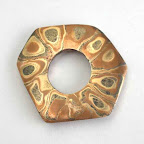 Preparation Time. I really like working with Hadar’s delightful clays. Each of those comes as a powder that must be mixed with water before you can use it. This is not difficult, but it takes some time. How much to mix? If you don’t mix enough for a particular session, then you have to take the time to stop and mix up more. So it seems better to mix up a bit more than you think you will need (although you then have to find a way to store the excess, which I’ll address in my next post, on overhead costs). That mixing-time adds to what you have to include in the time it took to make each individual piece: it doesn’t take a lot of extra time, but there is enough to count.
Preparation Time. I really like working with Hadar’s delightful clays. Each of those comes as a powder that must be mixed with water before you can use it. This is not difficult, but it takes some time. How much to mix? If you don’t mix enough for a particular session, then you have to take the time to stop and mix up more. So it seems better to mix up a bit more than you think you will need (although you then have to find a way to store the excess, which I’ll address in my next post, on overhead costs). That mixing-time adds to what you have to include in the time it took to make each individual piece: it doesn’t take a lot of extra time, but there is enough to count.
Firing Time. This is probably the biggest issue. Together, those four rose bronze pieces I posted about last week “filled” the firing box in my kiln. Because I need not worry about creating an oxygen-reduced atmosphere when I fire precious metals, had I made silver pieces the same size I could have fit at least four times as many into a single firing. (I could have fit at least twice as many on a kiln shelf (probably more!), and I certainly could have fired two shelves at a time.) And, since these clays must be fired twice, that means I could have fired thirty or more silver pieces in the time it took me to fire those four bronze ones!
(And, this particular issue gets magnified even more when you consider the “overhead” issues involved in all the extra firing. I’ll discuss that further in part 2.)
Finishing Time. Some designs (e.g., inlays and mokume gane effect) are very interesting to see and lots of fun to make, but do require that a lot of time and effort be expended on post-fire polishing to come out looking really great.  Other styles (e.g., basic textures) are more comparable in the time they take to finish across all the different products (precious and non-precious metals alike). Still others, however, seem to come out somewhere in between (e.g., various “draped” pieces), and I’m still exploring how best to approach building those so that they are appealing to look at yet not way out on the difficult end of the scale to finish.
Other styles (e.g., basic textures) are more comparable in the time they take to finish across all the different products (precious and non-precious metals alike). Still others, however, seem to come out somewhere in between (e.g., various “draped” pieces), and I’m still exploring how best to approach building those so that they are appealing to look at yet not way out on the difficult end of the scale to finish.
Those three aspects are probably the easiest to address, in very simple terms, concerning “hidden factors” in the price of a product. In subsequent posts, I’ll outline a few others. As ever, I welcome comments from fellow artists, students, customers, and other readers of this blog….

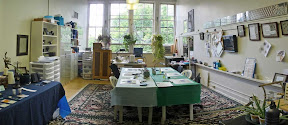
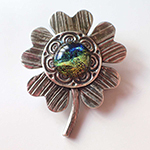 Artsmiths of Pittsburgh
Artsmiths of Pittsburgh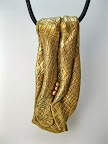 Hoyt Center for the Arts, New Castle, PA
Hoyt Center for the Arts, New Castle, PA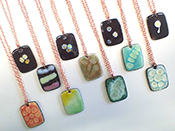 Portage Hill Gallery, Westfield, NY
Portage Hill Gallery, Westfield, NY _Open Houses in my Studio
_Open Houses in my Studio _Or…contact me about hosting a private party!
_Or…contact me about hosting a private party!


